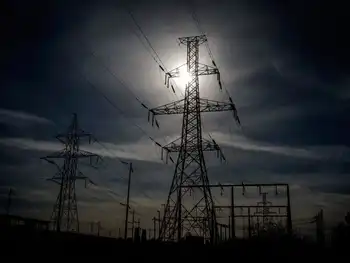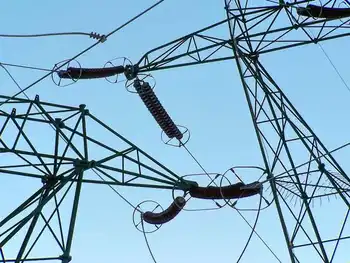EPA sues East Kentucky Power: Says Clark plant operating over limits
KENTUCKY - The federal government has sued East Kentucky Power Cooperative, alleging that the cooperative has been operating two generators without participating in a federal pollution control program designed to reduce acid rain.
The Environmental Protection Agency says two units at the William C. Dale coal-fired power plant in Clark County can generate up to 27 megawatts of power, above the 25 megawatt threshold for being required to participate in the pollution program. The EPA's lawsuit says East Kentucky Power should be fined for excess emissions and could be fined $30,000 a day for the violations, meaning EKPC could potentially face millions of dollars in fines.
East Kentucky Power spokesman Kevin Osbourn said the company disputes the megawatt rating.
"East Kentucky Power bought and the manufacturer designed, built and supplied a turbine generator set that we understood was rated at 24 megawatts," he said.
In the lawsuit, attorneys for the government ask that EKPC be forced to comply with the federal program and pay penalties for excess emissions.
The penalties should be $2,000 to $3,000 for every ton of certain types of pollutants emitted beyond allowances EKPC might have owned, the EPA says.
The EPA's findings have been classified as a high priority violation, which is "in the top category of violations," said Kevin Flowers of the state Division for Air Quality.
At issue are improvements East Kentucky Power made in 1998 to its first and second units at the Clark County plant.
The units, which are the smallest in East Kentucky's system, originally operated at 22 megawatts. In 1998, the co-op added a set of generators manufactured by General Electric.
The EPA said those generators bring units' capacity up to 27 megawatts, putting them under the federal Acid Rain Program.
The generators also would be under the regulation of the Nitrogen Oxide State Implementation Plan Call program, also called the NOx SIP Call program, which is designed to reduce ground-level ozone from state to state.
The lawsuit, filed late June 30, states East Kentucky Power failed to enroll in the programs, which require utilities to monitor those emissions and, in the case of the acid rain program, purchase emission credits if they emit more than a certain number of tons of the pollutants annually.
If a power plant emits more pollutants than permitted, it must buy credits from other plants to offset the difference. The program's goal is to offer financial incentives to companies that reduce emissions and can then sell their credits to other firms.
According to the lawsuit, the emissions of sulfur dioxides and nitrogen oxides from the units at the Dale plant "have been, and still are, unpermitted and illegal."
East Kentucky Power declined to release the total emissions from those two units. The data were not readily available to state officials, and federal officials with the Department of Justice said their estimates are still preliminary.
The inspections leading to the lawsuit stretch back to late last year.
The EPA began to look into the units after East Kentucky Power submitted data to a monitoring group that suggested the units might have been operating at higher than 25 megawatts, according to EPA documents.
In late December, the EPA asked state officials to verify the nameplate rating of the generators, said John Lyons, director of the state Division for Air Quality.
Lyons said the state would not have learned of the alleged discrepancy otherwise because inspectors don't typically look at nameplate ratings.
The EPA issued a notice of violation to East Kentucky Power on Jan. 17, relaying the findings.
In early February, the state Department for Environmental Protection issued its own notice of violation.
"It's essentially more of an administrative-type violation than it is environmental harm," Lyons said.
He said that "being in that program or not in that program didn't change the amount of emissions that came out."
"If they had signed up for the program then and had these emission credits, they wouldn't have put out any less pollution probably," Lyons said.
Instead, East Kentucky Power would have had to pay for the credits if they were needed.
"Those units would have ran whether they had a 24-megawatt generator or a 27," Lyons said.
Osbourn said East Kentucky Power is taking "the matter seriously."
"We are working closely with the EPA to resolve the issues," he said.
He noted that the company has spent hundreds of millions to upgrade emission control equipment at its plants.
"We stand by our environmental record," Osbourn said. "And it has always been our policy to strictly comply with the law."
Related News

U.S. Department of Energy Announces $110M for Carbon Capture, Utilization, and Storage
WASHINGTON - The U.S. Department of Energy’s (DOE’s) Office of Fossil Energy (FE) has announced approximately $110 million in federal funding for cost-shared research and development (R&D) projects under three funding opportunity announcements (FOAs). Approximately $75M is for awards selected under two FOAs announced earlier this fiscal year; $35M is for a new FOA.
These FOAs further the Administration’s commitment to strengthening coal while protecting the environment. Carbon capture, utilization, and storage (CCUS) is increasingly becoming widely accepted as a viable option for fossil-based energy sources—such as coal- or gas-fired power plants and other industrial sources—to lower their carbon dioxide…




